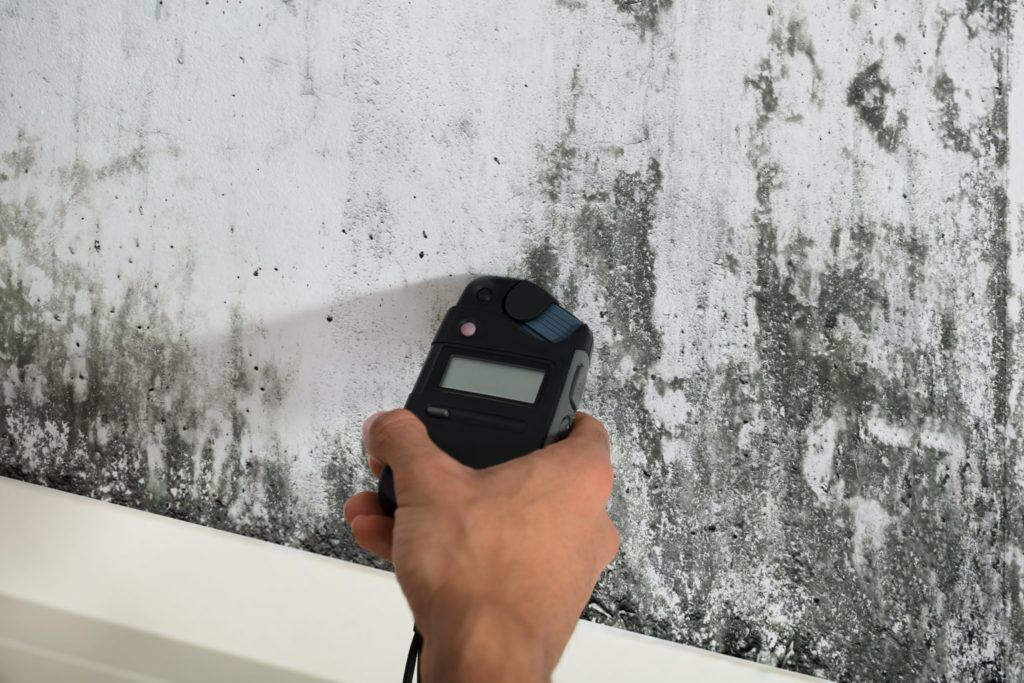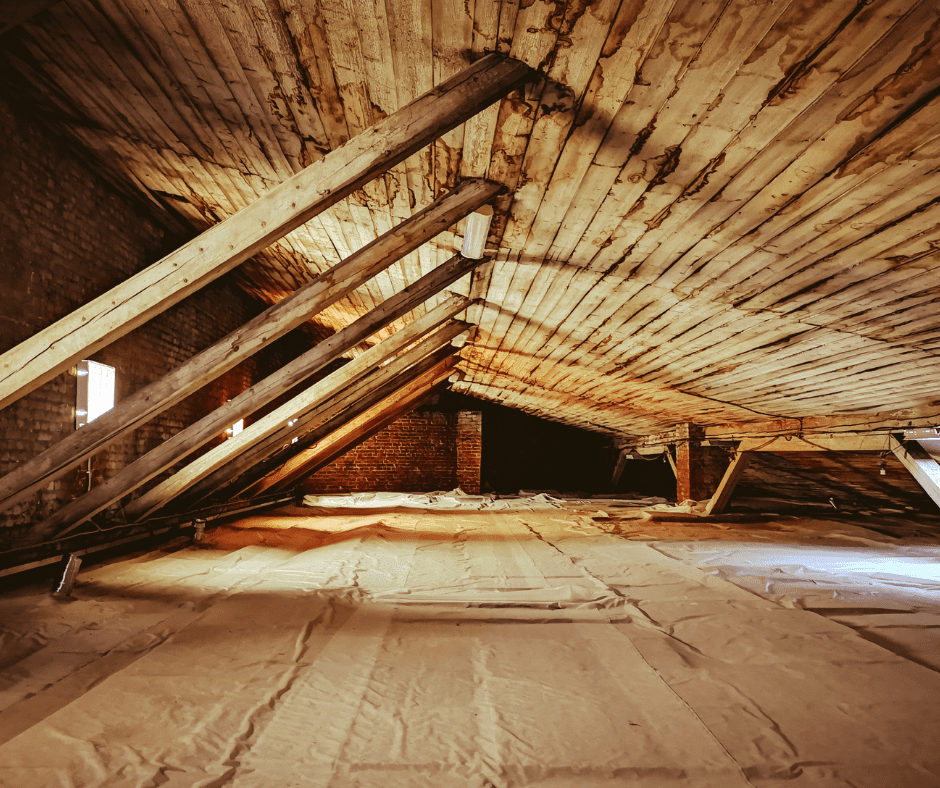Mold. It’s one of those words that instantly makes homeowners cringe.
It can silently invade your home, often going undetected until it becomes a major, expensive issue.
Mold not only damages the structural integrity of your house but can also wreak havoc on your health.
The good news? With a little effort and regular inspections, particularly in your attic and basement, you can stop mold before it becomes a full-blown disaster.
Whether you’re a new homeowner or a seasoned DIY-er, this guide will help you understand how regular inspections of two often-overlooked areas—your attic and basement—can help keep your home mold-free.
Why Focus on Attics and Basements?

(Photo from IR Environmental)
Your attic and basement are two of the most susceptible areas for mold growth. These spaces are often poorly ventilated, prone to moisture accumulation, and not regularly checked. If you’re not regularly heading up to the attic or down to the basement, a little bit of moisture can quickly turn into a breeding ground for mold.
What Causes Mold?
Mold thrives in environments with excess moisture and poor ventilation. While mold spores are naturally present in the air, they only become problematic when they find the right conditions to grow—mainly damp, humid areas. In a home, these conditions often develop due to:
- Roof Leaks: Small, undetected leaks in the attic can lead to water buildup, providing the perfect environment for mold to grow.
- High Humidity Levels: Poor ventilation or high humidity in basements can trap moisture, creating a breeding ground for mold.
- Flooding: If your basement has experienced any flooding or water damage, it’s likely moisture has seeped into the walls or flooring, increasing the risk of mold.
- Condensation: This happens frequently on cold surfaces, like pipes or concrete walls, which can introduce unwanted moisture into your basement.
The key to preventing mold is keeping moisture under control and regularly checking for signs of trouble in these vulnerable spaces.
The Benefits of Regular Inspections

(Photo from Mike Holmes Inspections)
Performing regular inspections of your attic and basement may seem tedious, but it’s well worth the effort. Here’s why:
1. Catch Problems Early
When you inspect these areas regularly, you’re more likely to catch minor issues before they become major ones. A small leak, a crack in the foundation, or minor condensation can be repaired before they lead to serious water damage and mold growth. Early detection of these issues saves you from costly mold removal services and, in some cases, can prevent extensive damage that requires major repairs.
2. Improved Air Quality
Mold releases spores into the air, which can trigger allergies and respiratory issues like asthma. Regular inspections and quick interventions to remove moisture or mold can significantly improve the air quality in your home. Think of your attic and basement as lungs for your home—if they’re clear and healthy, your entire home breathes better.
3. Protect Property Value
Whether you’re planning to sell your home soon or just thinking long-term, keeping mold out of your attic and basement protects your property’s value. A home with a history of mold is harder to sell, and potential buyers often request significant price reductions or mold remediation as part of the sale process. A well-maintained, mold-free home will always be more attractive on the market.
What to Look For During Inspections
You don’t need to be a mold expert to conduct a thorough inspection. Here are some red flags to watch for when checking your attic and basement:
Attic Inspection Checklist:
- Water stains on beams or insulation: These are telltale signs of leaks.
- Damp insulation: Wet insulation can trap moisture, leading to mold growth.
- Condensation on windows or rafters: This indicates poor ventilation.
- Musty odors: A musty smell is often the first sign of mold.
- Visible mold: Mold often appears as fuzzy patches, black or green spots on wood or other surfaces.
- Ventilation issues: Make sure your attic has proper ventilation to prevent moisture buildup.
Basement Inspection Checklist:
- Cracks in the foundation: These can allow moisture to seep in.
- Dampness or pooling water: Check floors and walls for any signs of water.
- Condensation on pipes or walls: This indicates high humidity levels.
- Musty smells: Again, that telltale musty odor is a good indicator of moisture or mold.
- Discoloration or staining: Look for any discoloration on walls, floors, or ceilings, which could indicate water damage.
Mold Prevention Tips for Attics and Basements

(Photo from MSR Restoration)
Preventing mold is easier (and cheaper) than dealing with it after the fact. Here are some effective strategies to keep your attic and basement mold-free:
1. Control Humidity Levels
Install a dehumidifier in your basement to keep the humidity below 50%. This is especially important during humid months. In your attic, proper ventilation is crucial. Ensure that vents are working properly, and consider installing additional vent fans if necessary.
2. Repair Leaks Immediately
Whether it’s a small drip from the roof into your attic or a crack in the foundation letting water seep into the basement, address leaks right away. Small leaks can escalate into major mold-friendly disasters.
3. Insulate Pipes and Walls
Prevent condensation by insulating cold surfaces like pipes and basement walls. This will reduce the chances of moisture buildup.
4. Regular Maintenance
Make sure gutters are clear and direct water away from your home’s foundation. Inspect the attic for any signs of roof damage and check the basement for cracks or leaks after heavy rains.
Call in the Pros!

(Photo from Bay Area Mold Pros)
While regular DIY inspections and preventive measures go a long way in protecting your home, sometimes professional help is necessary. If you discover mold or suspect hidden water damage, it’s best to call in a mold remediation specialist or a home services professional to assess the situation. They’ll have the expertise to handle any mold issues thoroughly and safely.
To conclude, keeping your home mold-free doesn’t have to be a daunting task. With regular attic and basement inspections, you can catch potential problems early and take action before mold has a chance to grow. A little preventive maintenance goes a long way in protecting your home, your health, and your wallet. So, take a moment every few months to give your attic and basement some attention. Your future self (and your home) will thank you!
Thank you guys so much for taking the time to read this blog post - we here at Connect truly appreciate it! For all the latest home related blog content, keep your tabs posted on our socials: we get new posts up every Tuesday and Thursday!
Check out these websites as well - they provided us with the inspiration to create this blog post!
CF Mold Inspect: https://cfmoldinspect.com/prevent-mold-basement
Moldbusters: https://moldbusters.com/blog/2024/05/31/preventing-mold-growth-in-your-attic-tips-and-tricks/
Your Mold Solutions: https://yourmoldsolutions.com/blog/dont-let-mold-haunt-your-basement-crawl-space-or-attic/